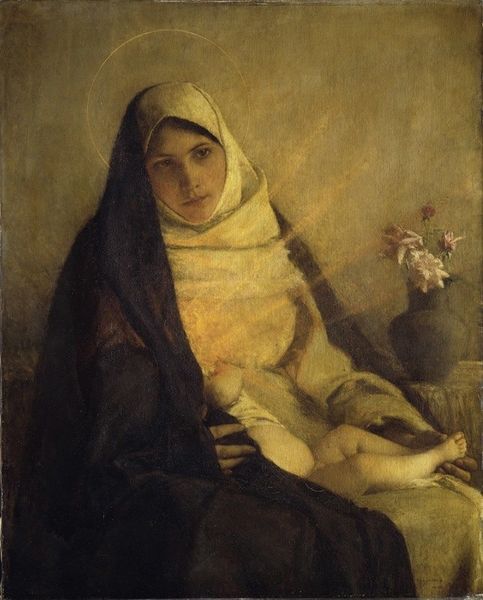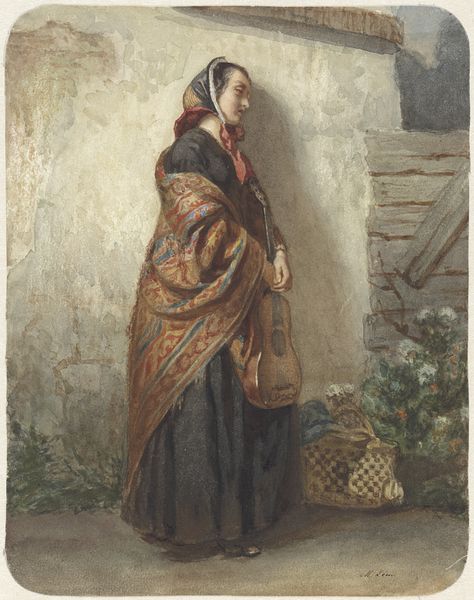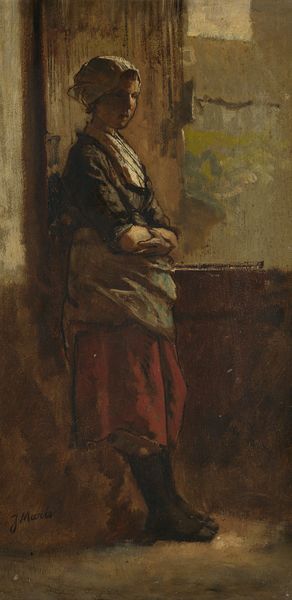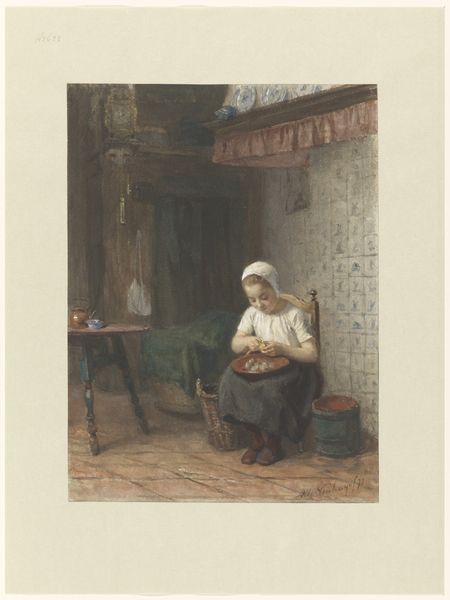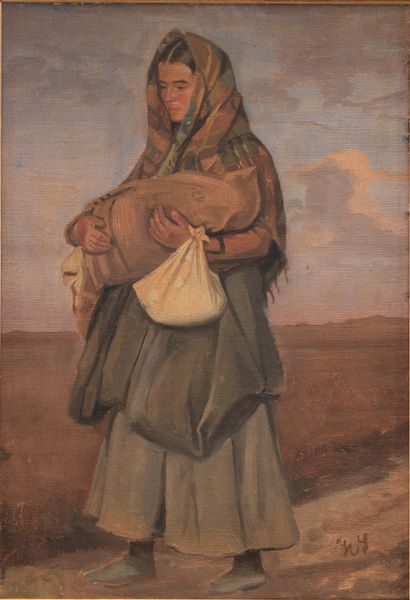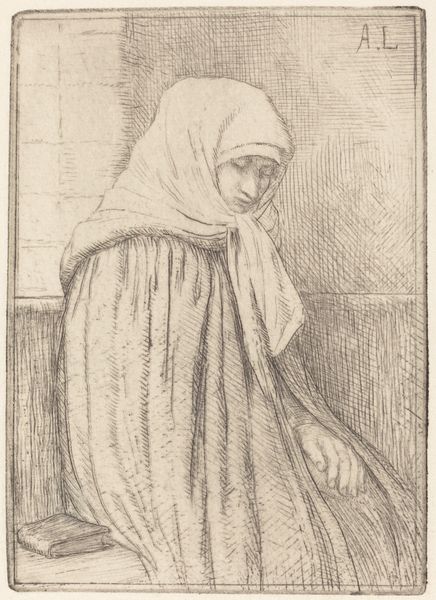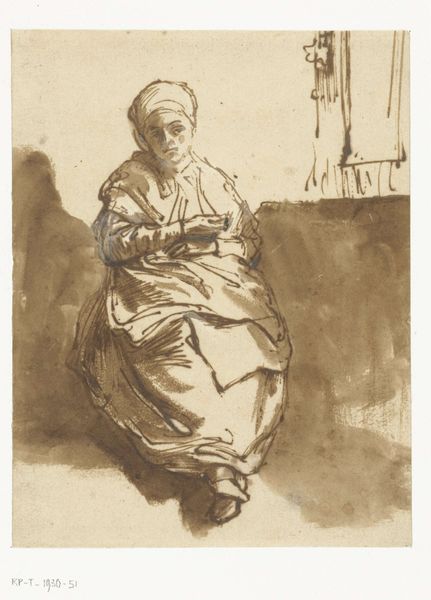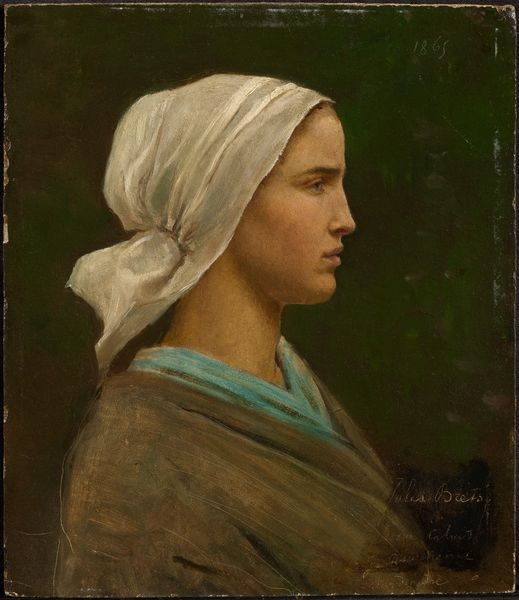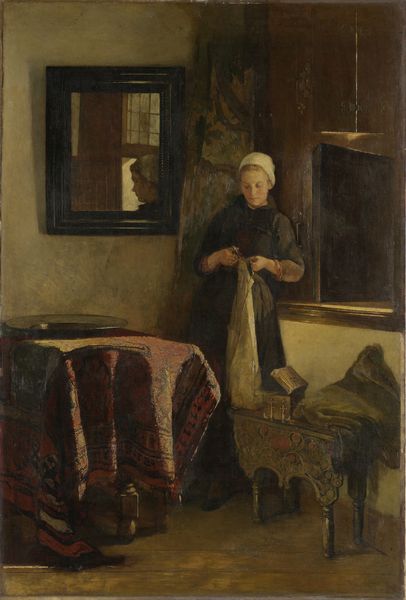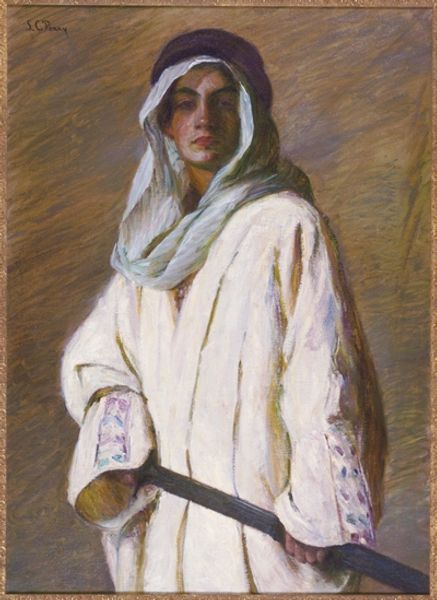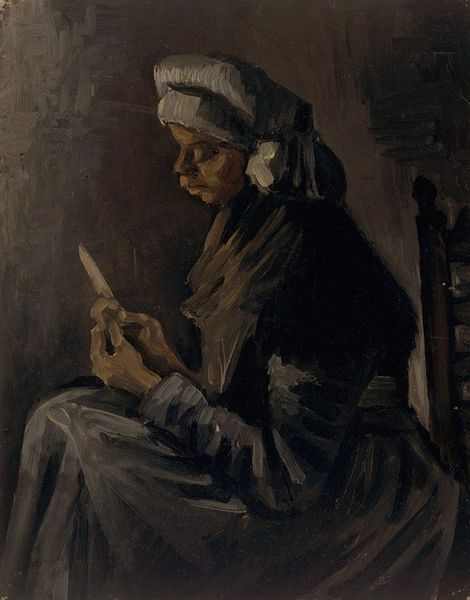
painting, impasto
#
portrait
#
painting
#
impasto
#
genre-painting
#
realism
Dimensions: 29 1/2 x 24 in. (74.9 x 61 cm)
Copyright: Public Domain
Curator: Looking at Edgar Degas' "The Old Italian Woman," painted in 1857, one is immediately struck by the subject's direct gaze, isn’t it? Editor: It’s incredibly compelling. The texture alone communicates so much. You can almost feel the weight of the shawl, see every line etched into her face…the material presence of aging. Curator: Exactly. Degas employs impasto techniques, layering paint to create that tactile surface. Consider the process here: the building of pigment reflecting a tangible experience of age and its social implications. Her shawl and dress are roughly painted in browns, off-whites and dull yellows, reflecting everyday life of poverty. Editor: Yes, and I can’t help but wonder about this woman's life within the broader context of 19th-century Italy. Her ethnicity, her economic standing…she’s unnamed, but clearly situated within a marginalized population. How does this specific depiction speak to the broader struggles of women in that era? Curator: Degas often explored the lives of working-class individuals, though more famously dancers and laundresses in France later on in his career. His earlier engagement with portraiture, especially in rendering aging women like this subject, provides interesting perspectives on this same type of manual work being placed in Italy, pre-Unification. This isn't just a painting of an "old woman"—it's a portrayal of a lived history made visible through skilled painting. It is genre-painting but almost on the edge of realism with how his portrait shows her features and the dress' coloring. Editor: Absolutely, the genre merges the real. It feels crucial to consider the act of labor itself—Degas' labor as a painter, transforming raw materials into this powerful image, and also this woman's invisible labor made visible, through the painting, to us. I think of all of those working-class people and how they influence these kinds of art movements. Curator: The contrast is so striking. By meticulously rendering this particular woman's image, he elevates the craft, calling for his audience to actively consider what her day looked like. She stares off in to the middle distance like a laborer ready to take a break before the work begins again, which is likely the story. Editor: Precisely! Looking closely helps dismantle the idea that this painting exists in a vacuum. There are multiple actors and material realities contributing to what we see today. That makes her so much more meaningful in history. Curator: A testament to how much an artist can reveal with a few skilled brushstrokes! Editor: Definitely gives you a new perspective on art in general.
Comments
No comments
Be the first to comment and join the conversation on the ultimate creative platform.
